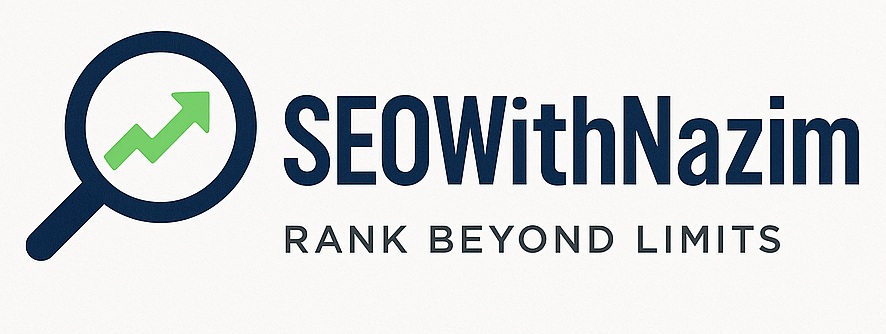A Website SEO Audit is a process of checking your website’s health to ensure it performs well in search engines and provides a smooth user experience. While many businesses spend money on premium software, you can still run a free SEO audit with tools that cover technical SEO, on-page SEO, backlinks, and usability
Key Takeaways
- A Website SEO Audit is a full health check of your site to find technical, on-page, and off-page issues.
- Free tools like Google Search Console, Screaming Frog, Ahrefs Webmaster Tools, and Seobility provide powerful insights.
- Key audit steps: check indexing, analyze on-page SEO, review site speed, test mobile usability, evaluate backlinks, and fix broken links.
- Free SEO audits save costs while delivering actionable SEO audit reports.
- Common issues found: duplicate content, slow speed, mobile errors, weak internal links, and harmful backlinks.
- Regular audits improverankings, visibility, and user experience.
What is a Website SEO Audit?
A Website SEO Audit is a complete checkup of your website to identify issues that affect search engine visibility, user experience, and overall performance. It covers technical SEO audit, on-page SEO audit, and off-page factors.
Think of it as a health check for your site. By running an audit, you find errors like broken links, slow page speed, duplicate content, or missing tags. The results help you understand how search engines see your site and how users interact with it. With this data, you can fix issues, improve rankings, and provide a smoother browsing experience. A regular SEO audit ensures your site stays aligned with search engine updates and user expectations.
Benefits of Running A Website SEO Audit with Free Tools
Running a free SEO audit with trusted tools saves money and provides valuable insights. Here are the main benefits:
- Identify Technical Issues – Tools highlight crawl errors, broken links, and indexing problems.
- Improve On-Page SEO – You can check meta tags, headings, internal links, and keyword placement.
- Enhance Site Speed – Faster sites improve user satisfaction and search rankings.
- Optimize Mobile Usability – Free tests show how well your site works on smartphones and tablets.
- Track Backlinks – Backlink analysis with free SEO tools uncovers harmful links and quality referring domains.
- Fix Duplicate Content – Helps detect and resolve duplicate pages in SEO, which can confuse search engines.
- Boost User Experience – An SEO audit with free tools ensures visitors have a smoother experience.
- Save Costs – Instead of paying for expensive audits, you can run a free SEO analysis and still receive detailed results.
- Create Actionable Reports – Most tools provide a clear SEO audit report that guides your next steps.
- Stay Competitive – Regular free audits help you stay ahead of competitors by quickly spotting new issues.
Step-by-Step Website SEO Audit Process Using Free Tools
This complete SEO audit guide explains how to do SEO audit with free tools in simple steps.
Step 1 – Check Site Indexing with Google Search Console
Start with Google Search Console SEO audit. This free tool shows which pages are indexed by Google. If important pages are missing, your site cannot rank.
- Open Google Search Console.
- Go to the Coverage Report.
- Look for errors like “Crawled – currently not indexed.”
- Submit missing pages for indexing.
This step ensures your website is visible to search engines.
Step 2 – Analyze On-Page SEO with AIOSEO/Seobility
Next, run an on-page SEO audit. Free tools like AIOSEO (WordPress plugin) or Seobility Free SEO Checker provide detailed insights.
- Check title tags, meta descriptions, and H1 tags.
- Review keyword usage and content length.
- Analyze internal linking and image alt text.
- Spot duplicate pages in SEO and fix them.
These tools give a score and suggestions for improvement.
Step 3 – Review Site Speed with Google PageSpeed Insights
Site speed is a ranking factor. A slow site increases bounce rates. Use Google PageSpeed Insights to test your site.
- Enter your URL.
- Check desktop and mobile performance scores.
- Focus on issues like large images, unused JavaScript, and server response times.
- Implement suggested fixes to improve loading speed.
Step 4 – Audit Mobile Usability with Google Mobile-Friendly Test
Most users browse on mobile devices. Run your site through the Mobile-Friendly Test.
- Enter your site URL.
- The tool shows if your site is mobile-friendly.
- Fix issues such as small fonts, overlapping elements, or content wider than the screen.
Improving mobile usability boosts both rankings and user experience.
Step 5 – Evaluate Backlinks with Ahrefs Webmaster Tools (Free)
Backlinks remain a strong ranking factor. Use the free version of Ahrefs Webmaster Tools.
- Check the number of referring domains.
- Identify spammy or toxic links.
- Review anchor texts for natural usage.
- Track new backlinks over time.
Removing bad links and building quality ones improves your site’s authority.
Step 6 – Fix Broken Links with Screaming Frog (Free Version)
Broken links harm user experience and SEO. Use Screaming Frog SEO Spider (free up to 500 URLs).
- Crawl your website.
- Identify broken internal and external links.
- Replace or redirect them to relevant pages.
This step strengthens site structure and prevents crawl issues.
Step 7 – Monitor Ongoing Performance
SEO is not a one-time job. You must track performance regularly.
- Use Google Analytics for traffic trends.
- Monitor impressions and clicks in Google Search Console.
- Schedule monthly Website SEO audits with free tools.
This process helps you stay consistent and competitive.
Free SEO Tools You Can Use Today
Here’s a table of popular free SEO tools with their main features:
| Tool | Features | Best For | Limitations |
| Google Search Console | Indexing status, performance report, coverage issues | Tracking site visibility | Limited to Google data |
| Google Analytics | Traffic analysis, user behavior, conversions | Measuring website performance | Requires setup and filters |
| Screaming Frog SEO Spider (Free) | Crawl up to 500 URLs, find broken links, metadata check | Technical SEO audit | Paid version needed for large sites |
| Ahrefs Webmaster Tools (Free) | Backlink analysis, domain health check | Off-page SEO audit | Limited compared to paid Ahrefs |
| SEMrush Free SEO Checker | Keyword analysis, site audit | Keyword and content optimization | Daily usage limits |
| Seobility Free SEO Checker | On-page SEO audit, technical issues, duplicate content detection | Complete SEO audit guide | Limited scans per day |
These tools cover every part of an SEO audit – indexing, technical SEO audit, on-page checks, backlink review, and performance tracking.
All Common SEO Issues a Free Audit Can Detect
A free Website SEO Audit can uncover many hidden problems:
- Pages not indexed in Google.
- Broken links affecting navigation.
- Duplicate content across multiple pages.
- Missing or duplicate title tags.
- Poor meta descriptions.
- Slow-loading pages.
- Mobile usability errors.
- Thin content with low word count.
- Weak internal linking structure.
- Spammy backlinks lowering authority.
- Incorrect use of canonical tags.
- Missing image alt text.
- JavaScript rendering issues.
- Unoptimized URL structure.
- Tracking errors in Google Analytics.
Fixing these issues ensures your site is healthy and competitive.
Conclusion
A Website SEO Audit using free tools is the most effective way to find and fix issues without spending money. From technical SEO audit to on-page SEO audit and backlinks, each step makes your site stronger. Running regular audits keeps your website optimized, improves rankings, and delivers a better user experience.
FAQs
1. What is a Website SEO Audit?
A Website SEO Audit checks your site for technical errors, on-page optimization gaps, and off-page issues that affect rankings.
2. Why use free tools for an SEO audit?
Free SEO tools provide accurate insights on indexing, site speed, and backlinks without expensive subscriptions.
3. How often should I run a Website SEO Audit?
Run a complete SEO audit at least once every quarter, and a mini audit monthly for quick fixes.
4. Which free tool is best for technical SEO audit?
Screaming Frog (free up to 500 URLs) is one of the best for detecting crawl issues and broken links.
5. Can Google Search Console do a full SEO audit?
It helps with indexing, performance, and mobile checks, but combining it with other tools gives a complete audit.

Nazim is a Bangladesh-based SEO specialist with years of hands-on experience in organic search growth. He runs seowithnazim.com, a blog dedicated to simplifying SEO through tutorials, tools, and step-by-step guides. Nazim focuses on actionable, ethical strategies that deliver long-term results.


Leave a Reply